We made our way around the Big Room loop trail.

A look into the giant cavern

Flowstone

Continuing along the path


The Hall of Giants contains the three largest speleothems in the cave: Giant Dome (a 62-foot column) and Twin Domes (a pair of 58-foot tall stalagmites).
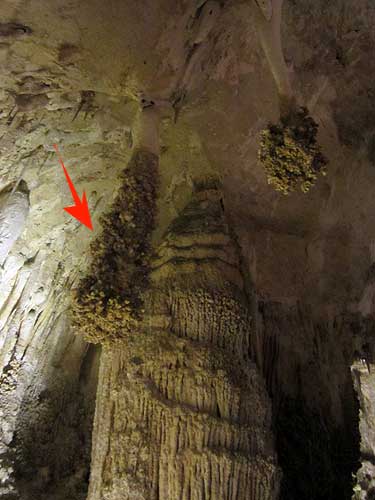
The Lion's Tail is a stalactite covered with popcorn.
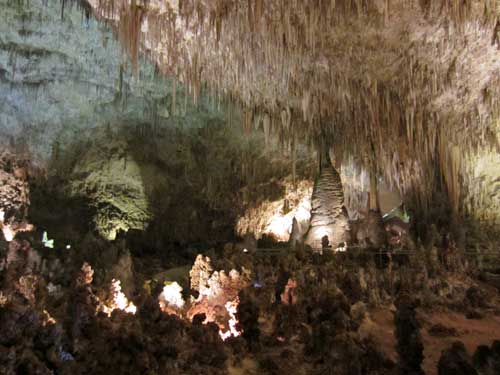
The floor of Fairyland is filled with popcorn-covered stalagmites. Note all the corresponding stalactites overhead.


This giant column is part of the Temple of the Sun.

These are Calcite Rafts (thin layers of calcite on the surface of pools... which may or may not still be there) and Fried Eggs (small stalagmites that are typically wider than they are tall).

Mood lighting


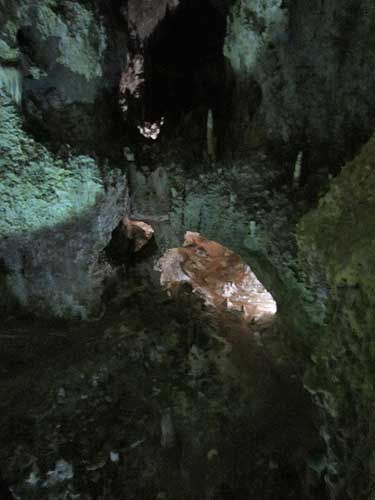
90 feet below us is the southern entrance to the Lower Cave. This is an undeveloped part of the cavern, consisting of over a mile of surveyed passages (with new ones are still being discovered). It's being preserved in its natural state for scientific study.

A photo of some Cave pearls discovered on the floor of the Lower Cave.

This ladder was installed in 1924 during a 6-month survey by the National Geographic Society. It was built by Jim White and goes all the way down to the Lower Cave. Imagine dangling in a black pit on this flimsy swaying ladder!

Click for a larger view

The lighting system includes more than 1,000 bulbs and tubes and 19 miles of concealed wires. It is designed to reveal the cavern's natural colors. Believe it or not, colored bulbs are not used. In the event of a power failure, the lights would be powered by a generator on the surface... so we wouldn't be trapped down here in complete darkness.
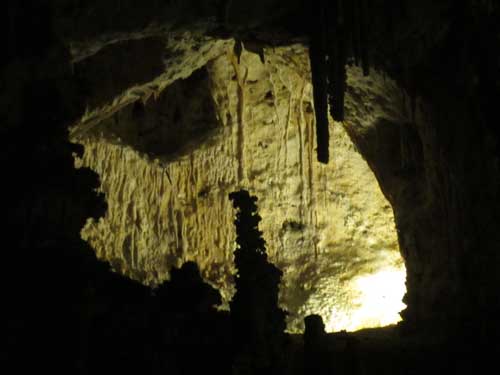

We were now at the back center of the cave.

The view looking back down the long main section


Mirror Lake

An indication of past water levels

This is the Bottomless Pit. Back in the early days, people tossed stones into this large hole to see how deep it was... but they heard no sounds of the stones striking the bottom. Later exploration revealed the bottom was about 140 feet down and covered with soft dirt which absorbed the sound.
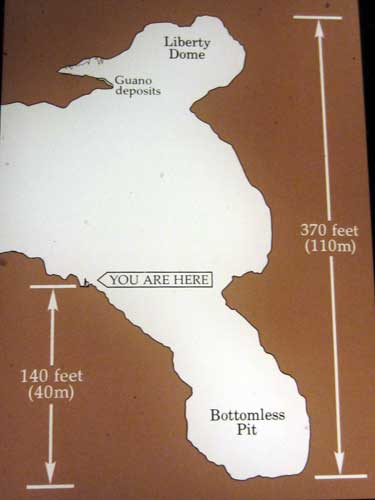
Both the pit and the overhead dome were eaten away by acidic solution when the cave was water filled.

Returning toward the Top of the Cross (located at the big stalagmite). The round passageway behind it leads down the other arm of the cross to the Lower Cave, and to the right leads back down the main passage of the cavern.
We now began our journey back out, along the other wall of the cavern.

This is a massive slab of gypsum, measured up to 15 feet thick. How it got here isn't quite fully understood.

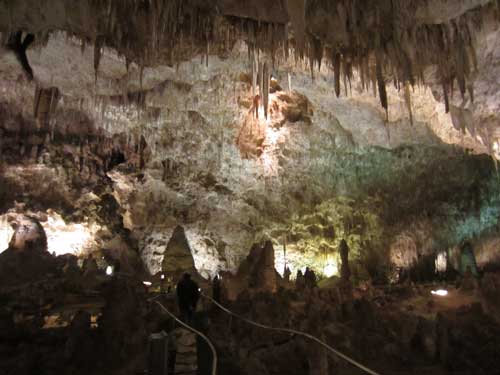
Note the person for scale

So in art...

... so in life.
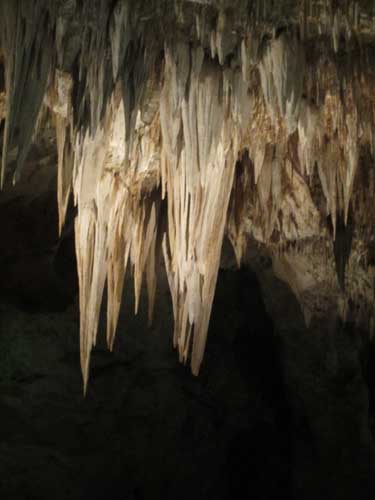

About 95% of the cavern's speleothems are dry and inactive today.
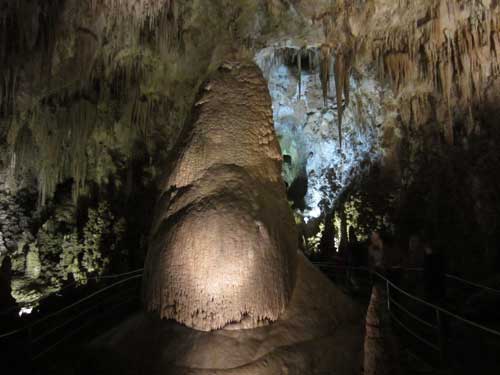
Crystal Spring Dome, however, is wet and still growing. Changes occur too slowly to be noticed during a human lifetime though.
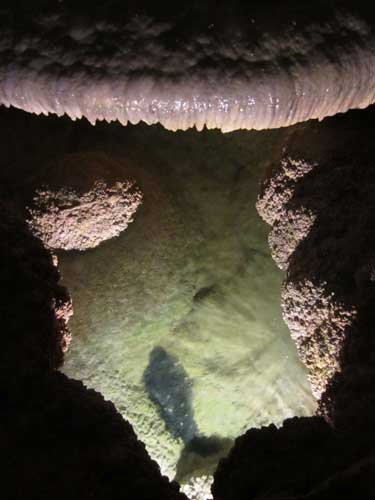
A drip pool surrounds its base.

Dripping or flowing water may either cause a formation to grow or dissolve it, depending on the chemistry and water volume.

Flowstone

Draperies coat the back wall.

Draperies often occur on sloped ceilings where the water has a tendency to run down the walls.





Eeewww.... drippy, slimy stuff! (Ok, that's probably NOT the technical term for it)

This impressive column goes by the name of Rock of Ages.


Calcite Rafts show that clearly the water level was higher at one point in time.


